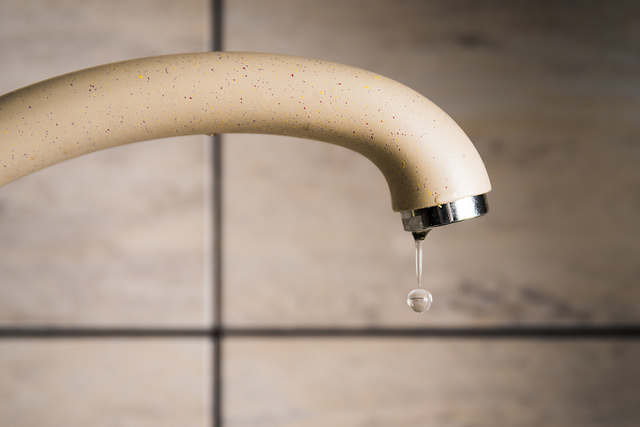>> In Wilmington, N.C., there’s perfluoro-2-propoxypropanoic acid, otherwise known as GenX, in our drinking water. And there’s perfluorooctanoic acid, known as PFOA, in the Cape Fear River, which is the source of our drinking water. These chemicals are used to make things like non-stick cooking surfaces and waterproof materials. They are also considered toxic.
In Wilmington, N.C., there’s perfluoro-2-propoxypropanoic acid, otherwise known as GenX, in our drinking water. And there’s perfluorooctanoic acid, known as PFOA, in the Cape Fear River, which is the source of our drinking water. These chemicals are used to make things like non-stick cooking surfaces and waterproof materials. They are also considered toxic.
Extensive studies have shown PFOA causes cancer, and it’s known as an endocrine disruptor that can impact the thyroid, liver and other organs. GenX was created to replace the more dangerous PFOA. It has been researched less but at least one study indicates GenX causes very similar health problems. It is known as an emerging contaminant because the federal Environmental Protection Agency (EPA) has not fully studied its health effects nor acceptable exposure thresholds.
For years, GenX, PFOA and other chemicals allegedly have been dumped in the Cape Fear River by some chemical companies on an industrial compound 100 miles upriver in Fayetteville, N.C.—namely DuPont, Chemours and Kuraray America. The >>Port City Daily reported that in a 2016 study that sampled water in the Cape Fear, PFOA levels repeatedly exceeded EPA limits. The study also found the presence of GenX in post-filtration water produced and sold by the Cape Fear Public Utility Authority (CFPUA).
In late May, Chemours—a DuPont spinoff—announced it will take steps to capture all wastewater containing the GenX chemical, remove the substance and dispose of it.
I don’t trust them.
PFOA has been at the center of several actions and lawsuits against DuPont by the EPA, mainly because DuPont was deceptively and illicitly dumping the toxic chemical. Last February, a $670 million settlement was reached between DuPont, Chemours and residents of Ohio and West Virginia (for some eye-opening look at the West Virginia case, >>read this New York Times article).
In 2008, as a result of DuPont’s actions and the government’s conclusion that PFOA was indeed harmful, DuPont and seven other U.S. companies agreed to virtually eliminate it from all consumer products by 2015. They also agreed to develop processes that would ensure that PFOA would not be released into the environment from finished products or manufacturing plants. Nonetheless, PFOA is in the Cape Fear River.
That 2008 agreement, by the way, is why GenX was developed. PFOA is a persistent material, meaning it’s resistant to typical environmental degradation processes, and it’s been reported that PFOAs are in everything, including in the blood of 95 percent of Americans. GenX is supposed to breakdown much more easily so it is far less persistent, but its long-term health effects on humans are unknown. Studies submitted to the EPA by DuPont between 2006 and 2013 show it caused tumors and reproductive problems in lab animals, >>according to CBS News.
The tainted water is big news here in Wilmington, N.C. Sure, the CFPUA is making noise and putting out statements. The utility is participating in studies and testing the water several times a week, and there’s an >>entire section on the its site dedicated to keeping us all informed. Officials there say they are committed to transparency, and are participating in various public forums.
I’m not sure I trust them either.
It has been reported by the local press that several officials have known since mid-2016 that GenX had been found in samples of CFPUA’s water, and that PFOA was in the river. The utility co-authored the three-year study that found the chemicals! None of them bothered to report the findings to the mayor, the city council, or local government officials. In late 2016, the findings were reported in a science journal; the public didn’t find out about it until six months later—in May 2017—when news stories started appearing.
State officials and the federal EPA have reportedly taken water samples from the river, and results are expected in a few weeks. The EPA is also investigating the Fayetteville compound where the chemicals are coming from.
But I’m not sure I can trust the EPA either.
The White House isn’t interested in water quality and in late June officially began repealing the Clean Water Rule, which was finalized by the Obama administration in 2015. Despite EPA Administrator Scott Pruitt’s promise to focus on protecting clean air and water for the American people, the repeal will re-evaluate and redefine ‘waters of the U.S.’—auspiciously to cut back on the Clean Water Rule that expanded protection on two million miles of streams and 20 million acres of wetlands.
The EPA estimates that one in three Americans get all or some of their water from public drinking water systems that depend at least partly on the streams which the Clean Water Rule would protect, >>according to Scientific American. If Pruitt has his way, those water sources would not qualify for protection.
I don’t know if the chemical companies dumping GenX and PFOAs into the river will do right by residents downstream. I don’t know if the CFPUA will clean up Wilmington’s water or be honest about what’s in it. I don’t know if the Cape Fear River is protected now or will be once the Clean Water Rule is fully repealed.
I don’t know if the water that flows from my tap is safe or not. I don’t know if the water my two children have been drinking for at least a decade has irreparably harmed them. I don’t know if it has harmed me. I don’t know if it has harmed any of my friends and neighbors or any of our pets.
I only know that clean water is non-negotiable. And for the foreseeable future, my family and I won’t be drinking the water in Wilmington, N.C.

There are no comments
Add yours